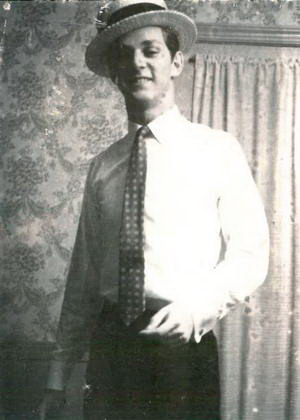|
Bruce Duffy
I’m
very honored to have been asked to speak today by the Cantor/Liebersohn family.
A family I’ve been a part of for nearly 50 years. In fact, I saw Arthur
not two months ago with his cousin Harry. Arthur looked great—then gone. Gone
in a way that seems almost unbelievable to me. And let me tell you why.
The
story begins in first period in home room. 7th
grade in Kensington Junior High School in 1964. It’s the story of a bluff,
world-weary boy to whom normal rules did not apply. Because
the Arthur Liebersohn
I
knew then, at 12 and 13, well, he was way too cool to die or follow the rules.
Rules! Rules were for fools.
No
indeed, you would not see hormonald 13-year-old Arthur P. Liebersohn wearing
some tacky, rumpled shirt that tumbled out of the dryer. He wore starched, pressed
shirts. As for those shoes with the dangerous looking toes, well, they weren’t
just shoes.
They were Florsheims.
Handbuilt. $50 a pop. .
Yes,
to me, my new sidekick was Steve McQueen . Batman. James Bond, too. And
then like Halley’s comet—this.
Okay.
So much for the story of the mythic Arthur Liebersohn. I now want to turn to the
deeper story of how Arthur changed. Arthur’s second act, if you will. The
story of his reinvention.
Let’s
face it. Along with our good self, we all live in some way with a shadow self.
A troubled self who periodically visits like a bad relation. We all
have our trouble.
For
Arthur—in my opinion— the real trouble started when he was around 17. His
father, David, developed cancer. Swift, ravaging cancer. I know because, more
than a few times, I helped Arthur carry his helpless father down the stairs to
the living room—a terrible thing for a son to see up close.
But
Arthur’s detour didn’t end there. A couple years later his irrepressible
mother, Bertha, she too died. And so in his early 20s, Arthur was an orphan. On
his own. Something he affected to not much care about. But of course he did.
Visible in a sharper edge to his natural cynicism.
But
you know what: life has a funny way of redeeming us—swapping sorrow for
luck. And Arthur’s luck is plain to see. It was marrying Mady Cantor. And
being adopted—overwhelmingly—by Cantor family. People who, safe to say,
revolutionized Arthur’s views on love and family, life and politics. And
fatherhood, too, with Max and Tess. A love in which he flowered as a man.
Yes,
for me, Arthur will always be a James Bond/Steve McQueen kind of character. But
what is more important, in his second act, Arthur Liebersohn became a full-blown
soul. An expansive one loved by many. And a man who will be deeply missed.
Goodbye,
buddy.
|

